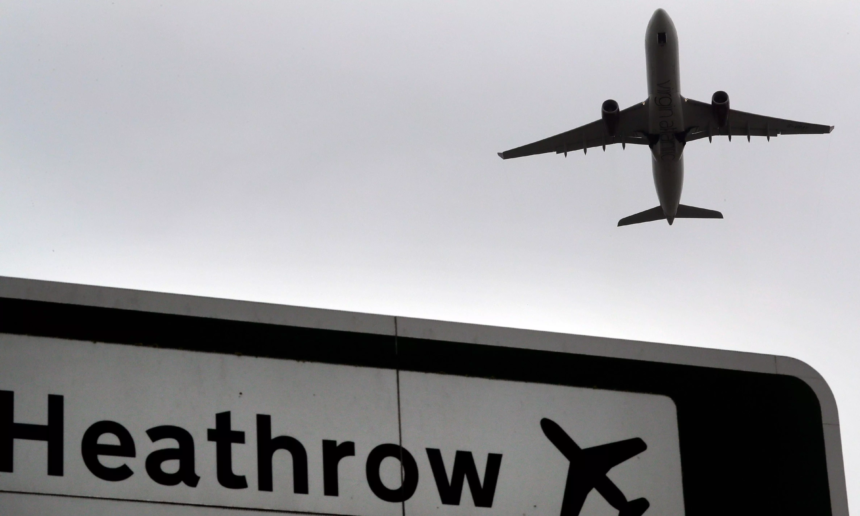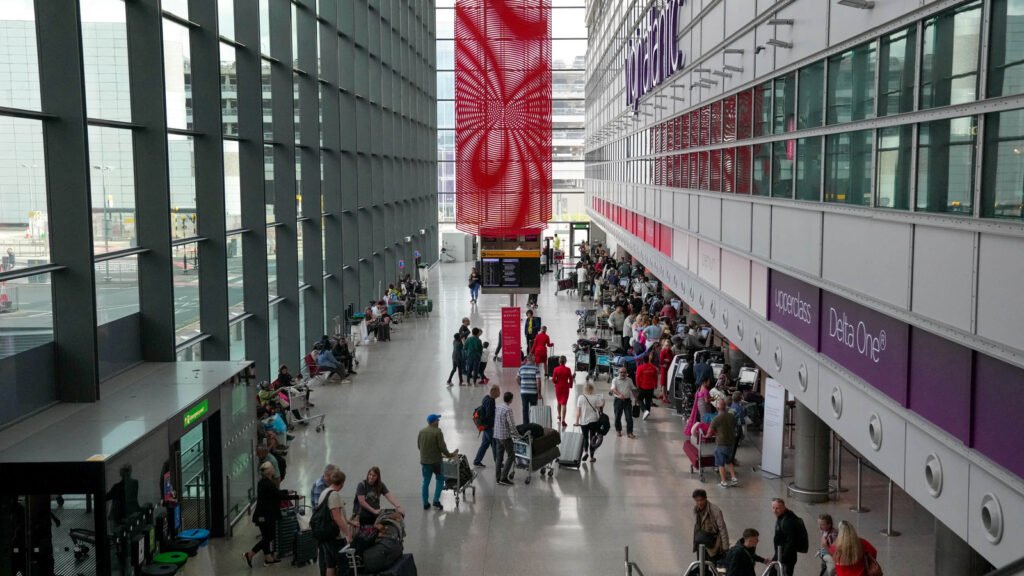A major London Heathrow Airport fire brought the world’s second-busiest airport to a complete halt on Friday, causing widespread travel chaos and grounding more than 1,350 flights. As Europe’s biggest aviation hub, Heathrow handled a record-breaking 84 million passengers in 2024.
A transformer fire at an electrical substation in west London triggered the shutdown, leaving thousands stranded and disrupting flights worldwide. Let’s break down the key developments surrounding this unprecedented airport closure.
Massive Fire at Electrical Substation Sparks Heathrow Chaos
Late Thursday night, a fire broke out at a substation near Heathrow Airport, sending flames high into the sky and leaving over 16,300 homes without power.
The blaze, which continued to smolder into the morning, forced the evacuation of about 150 people. Scottish and Southern Electricity Networks confirmed the fire as the reason for the widespread power failure, but the exact cause is still under investigation.
Over 1,350 Flights Cancelled—Travelers Stranded
The London Heathrow Airport fire led to immediate disruption, grounding more than 1,350 flights. When the airport announced its closure, 120 flights were already en route, leaving airlines scrambling to find alternative landing sites.
Many long-haul flights, particularly those bound for the U.S., were either redirected or sent back to their points of origin. Flight tracking data from FlightRadar24 revealed that thousands of passengers experienced major delays due to the crisis.
Flight Diversions and Airline Chaos
Several major airlines, including United, Delta, and American Airlines, reported significant cancellations. United Airlines confirmed that seven flights were either diverted or sent back, while other carriers also scrambled to adjust their schedules.
Planes were redirected to alternative airports, including Gatwick Airport, Paris Charles de Gaulle, and Shannon Airport in Ireland. The disruption even affected train services, as rail links to and from Heathrow were suspended.
Air India Cancels London Operations
Air India also faced severe disruptions, suspending all operations to London until 11:59 PM on March 21. Multiple flights were cancelled, and others had to be rerouted to different destinations, adding to the travel chaos.
Heathrow Airport: Europe’s Biggest Aviation Hub
Located in the western outskirts of London, Heathrow Airport is the busiest airport in Europe and the second-busiest in the world, just behind Dubai International Airport.
Passenger numbers hit a record 84 million in 2024, surpassing the pre-pandemic high of 81 million in 2019. With an average of over 200,000 daily travelers for nearly a year, Heathrow continues to dominate the global aviation scene.
Comparing Heathrow to other major European airports:
- Paris Charles de Gaulle: 70 million passengers
- Amsterdam Schiphol: 67 million passengers
- Madrid Airport: 66 million passengers
December 2024 was Heathrow’s busiest month, processing more than 7 million passengers. 2025 projections suggest even higher traffic, proving that Heathrow remains a crucial global travel hub.
Night Flight Restrictions Add to Delays
Unlike some international airports, Heathrow operates under strict night-time flight regulations. Flights can only begin operations at 6 AM, meaning that the closure extending until 11:59 PM on Friday caused a backlog of flights that may take days to clear.
Third Runway Expansion Gets Green Light
To keep up with rising demand, the UK government approved a third runway for Heathrow in January.
Currently, Heathrow operates with just two runways stretching nearly four kilometers each. With four terminals spread across 12.3 square kilometers, Heathrow connects to 200 destinations in over 80 countries.
The expansion project, however, faces significant hurdles. Environmental activists strongly oppose it, citing increased pollution and ecological damage. The cost of construction will also far exceed initial estimates.
Staff Shortages and Delays Continue to Plague Heathrow
Despite record passenger numbers, Heathrow has struggled with staffing issues. Post-pandemic layoffs, combined with frequent industrial strikes, have resulted in flight delays, luggage mishandling, and long passport control lines.
In December, Heathrow announced a £2.3 billion ($2.9 billion) investment over two years to improve facilities and ease congestion.
Financial Success Despite Challenges
Despite operational difficulties, Heathrow remains financially strong. The airport’s net profit jumped by nearly 8% in the first nine months of last year, reaching £496 million. The approval of the third runway and continued investments indicate Heathrow’s commitment to future growth.
Read More: L2: Empuraan – A Cinematic Spectacle with Intense Chaos and Global Grandeur
Conclusion
The London Heathrow Airport fire sent shockwaves through the global aviation industry, disrupting thousands of flights and leaving passengers stranded. While Heathrow remains Europe’s largest airport and a critical international gateway, the incident highlights vulnerabilities in infrastructure and the need for rapid response systems.
With increasing passenger demand, expansion plans, and ongoing staff shortages, Heathrow faces a challenging road ahead. Whether the airport can maintain its dominance will depend on how well it handles such crises in the future.










